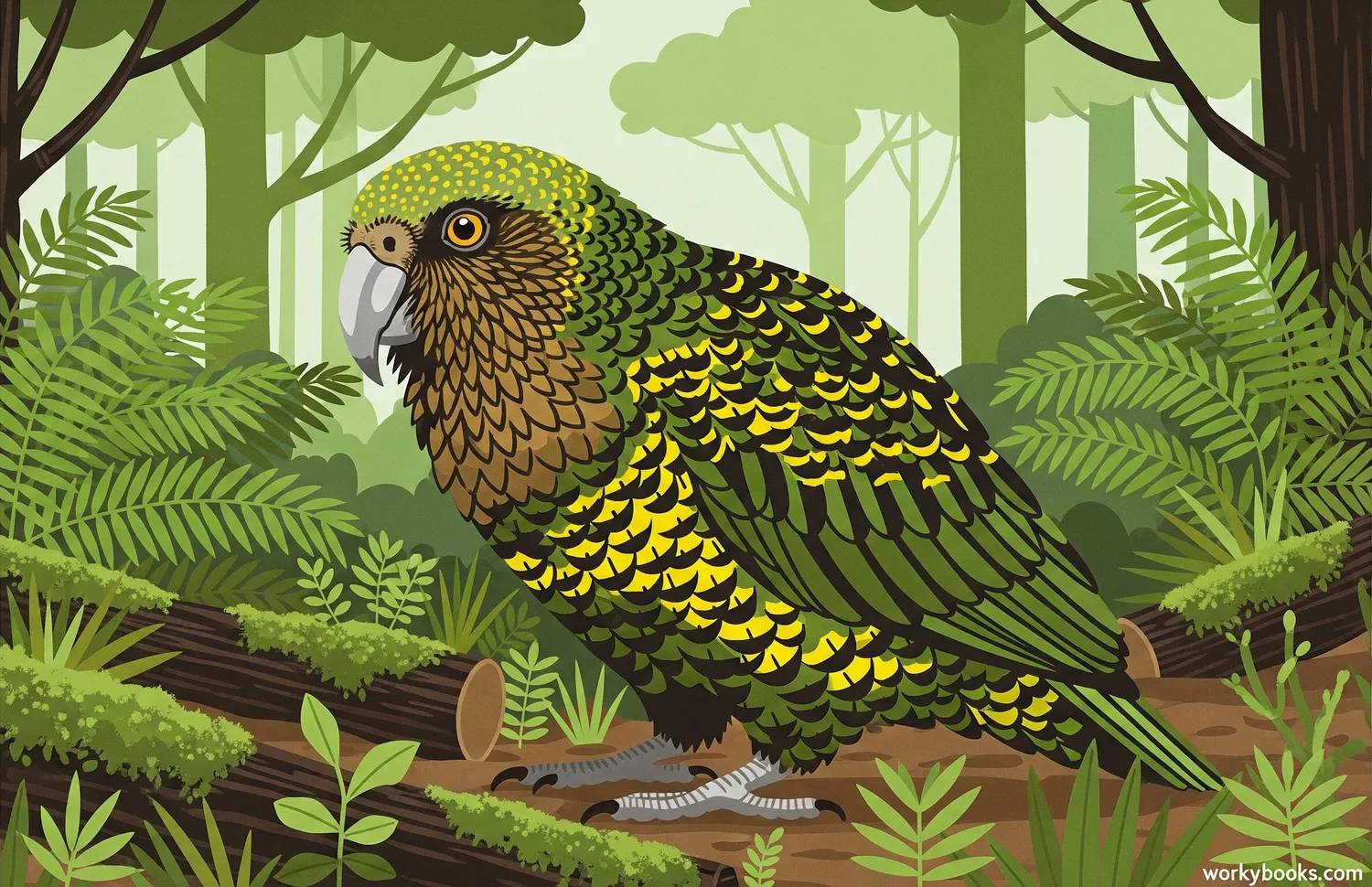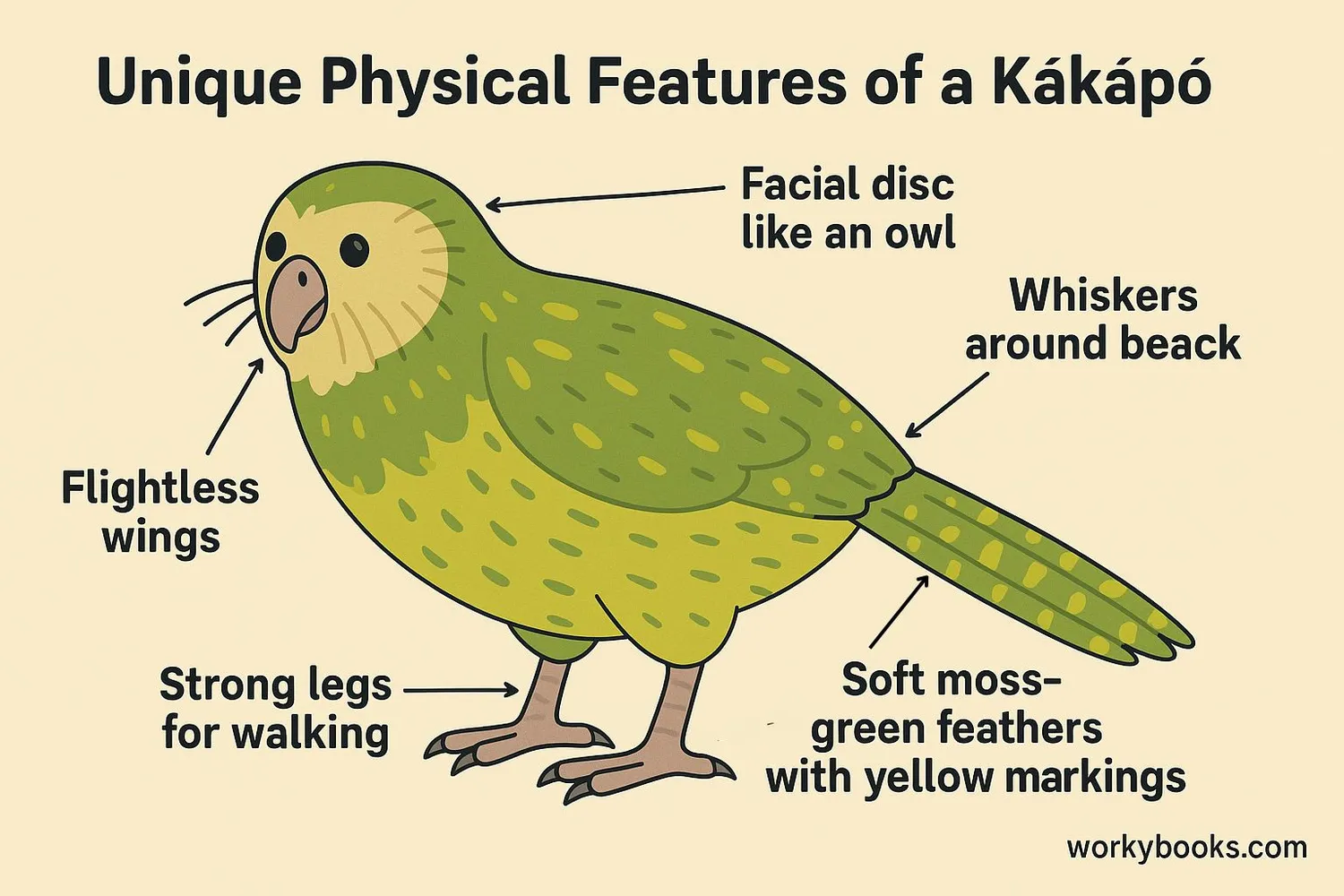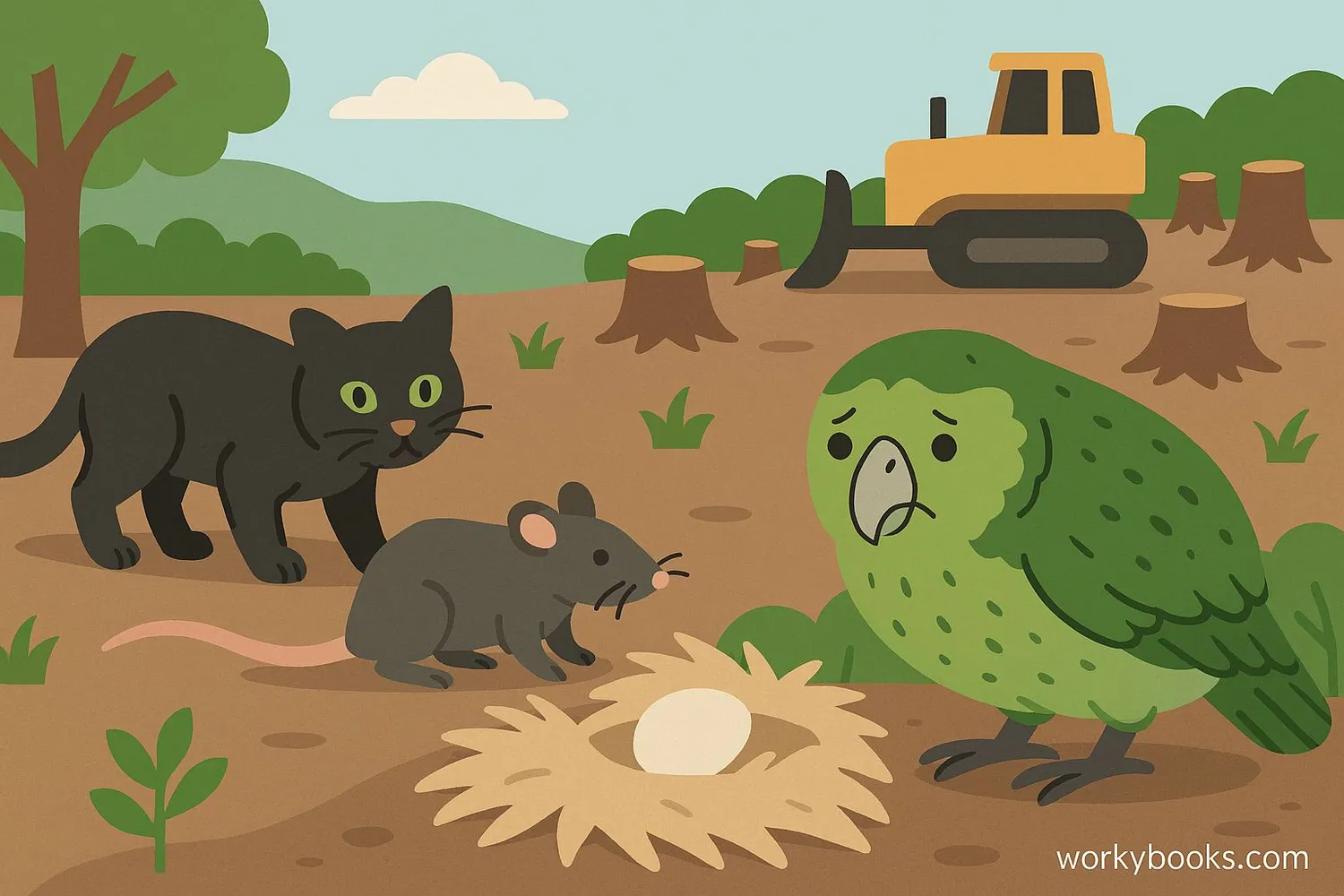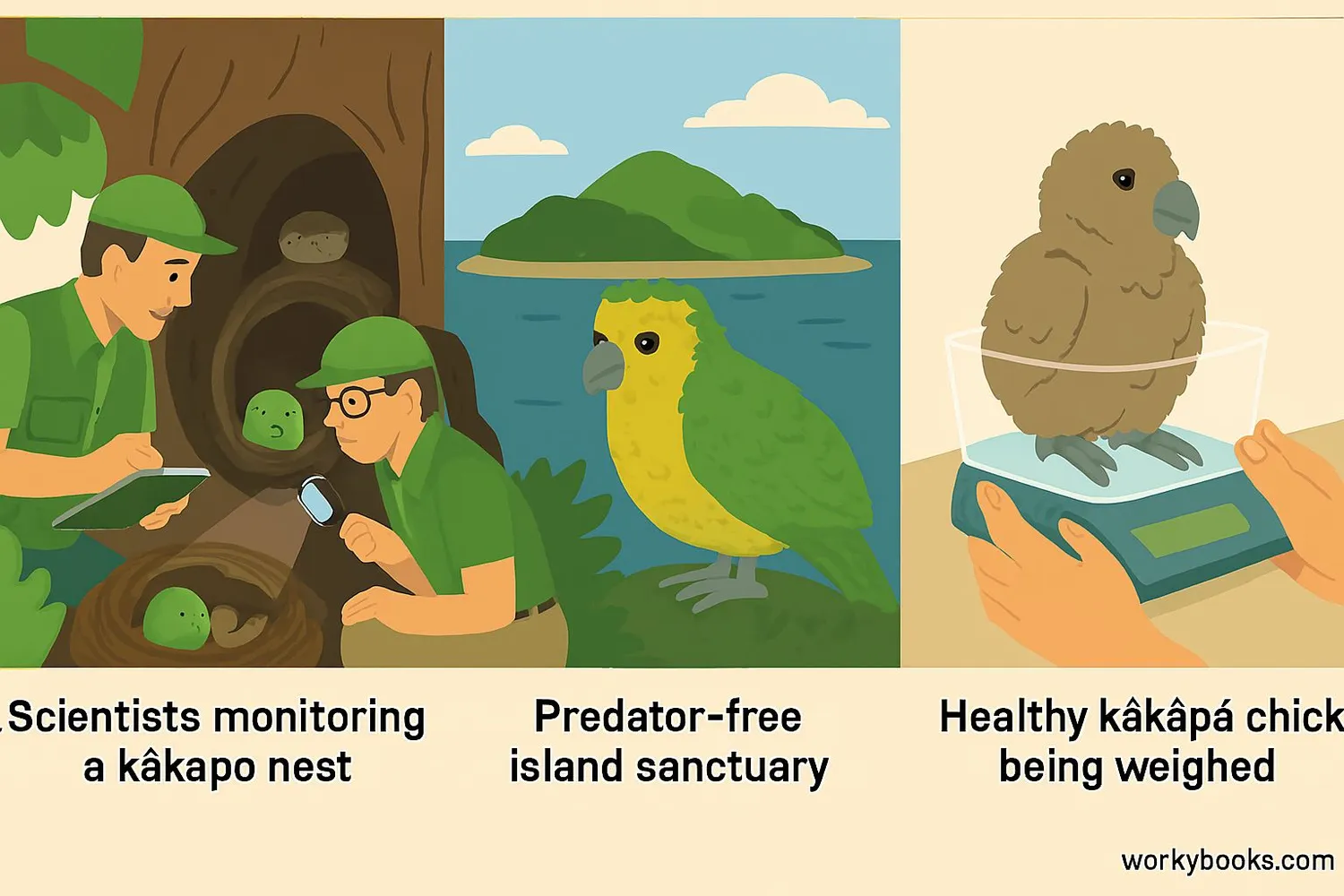Kakapo: The World's Only Flightless Parrot - Definition, Examples, Quiz, FAQ, Trivia
Discover New Zealand's amazing nocturnal bird and the conservation efforts to save it!
What is a Kakapo?

The kakapo (pronounced KAH-kah-poh) is an incredibly special bird! It's the world's only flightless parrot and one of the rarest birds on Earth. Native to New Zealand, kakapos are also known as "owl parrots" because of their owl-like faces.
Imagine a parrot that can't fly! Instead of soaring through the air, kakapos walk or climb through the forests of New Zealand. They're also nocturnal, which means they're active at night, just like owls. These unique birds have lived in New Zealand for millions of years, making them true living treasures!
Fun Fact!
The word "kakapo" comes from the Māori language meaning "night parrot" - perfect for these nocturnal birds!
Unique Characteristics

Kakapos have some amazing features that make them unlike any other bird in the world:
Flightless Wings
They have wings but are too heavy to fly. Instead, they use their wings for balance when climbing trees
Strong Legs
Powerful legs help them walk long distances and climb trees
Nocturnal Nature
Active at night with excellent night vision
Special Feathers
Soft moss-green feathers with yellow markings provide perfect camouflage
Unique Scent
They have a pleasant, sweet smell like honey or flowers
Kakapos are also known for their long lifespans - they can live up to 90 years! That's longer than most humans! They're also one of the heaviest parrot species, with males weighing up to 4 kg (9 lbs) - about the weight of a cat!
Special Behavior!
Male kakapos create a special "boom" call during mating season that can be heard up to 5 km (3 miles) away!
Why Kakapos Are Endangered

Kakapos are critically endangered, meaning they're at very high risk of extinction. In 2023, there were only about 250 kakapos left in the world. Here are the main reasons why:
Predators
Introduced predators like rats, cats, and stoats eat eggs and chicks
Habitat Loss
Forests cleared for farming reduced their living space
Low Reproduction
They only breed every 2-4 years when certain trees produce fruit
Kakapos evolved without land predators for millions of years. When humans arrived in New Zealand about 700 years ago, they brought animals that hunted kakapos. Since kakapos freeze when threatened (instead of flying away), they were easy targets. By the 1990s, only 51 kakapos remained!
Conservation Efforts

Amazing conservation efforts are helping kakapos make a comeback! Here's how scientists are saving these special birds:
Predator-Free Islands
All kakapos moved to islands where predators are eliminated
Nest Monitoring
Scientists use cameras and sensors to protect nests 24/7
Supplementary Feeding
Birds get extra nutrition to help breeding
Artificial Insemination
Helps increase genetic diversity
Chick Rescue
Abandoned chicks are hand-raised by experts
These efforts are working! In 2019, a record 86 chicks were born - more than in the previous 10 years combined! Each kakapo has a name and a radio transmitter so scientists can track them. The most famous kakapo, Sirocco, even has his own Facebook page!
Conservation Win!
In 1995, there were only 51 kakapos left. Today there are about 250 - proof that conservation works!
Kakapo Quiz
Test your kakapo knowledge with this fun quiz! Answer all 5 questions to see how much you've learned.
Frequently Asked Questions
Here are answers to some common questions about kakapos:
Amazing Kakapo Trivia
Discover some incredible facts about these unique birds!
Heavyweight Champion
The kakapo is the world's heaviest parrot! Males can weigh up to 4 kg (9 lbs) - that's heavier than a newborn human baby!
Sweet-Smelling Birds
Kakapos have a pleasant, sweet smell like honey or flowers. Unfortunately, this makes them easy for predators to find!
Record Lifespan
Kakapos are among the longest-living birds. The oldest known kakapo, Richard Henry, lived to be about 80 years old!
Conservation Success
In 1995, only 51 kakapos remained. Thanks to conservation efforts, there are now about 250 - a true success story!


